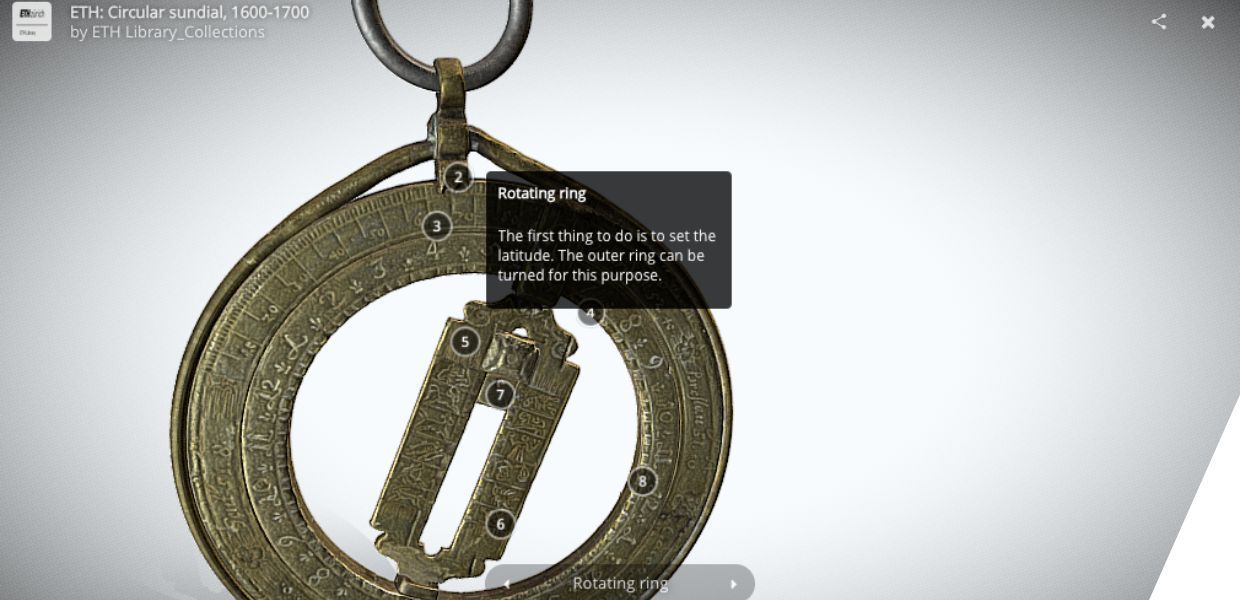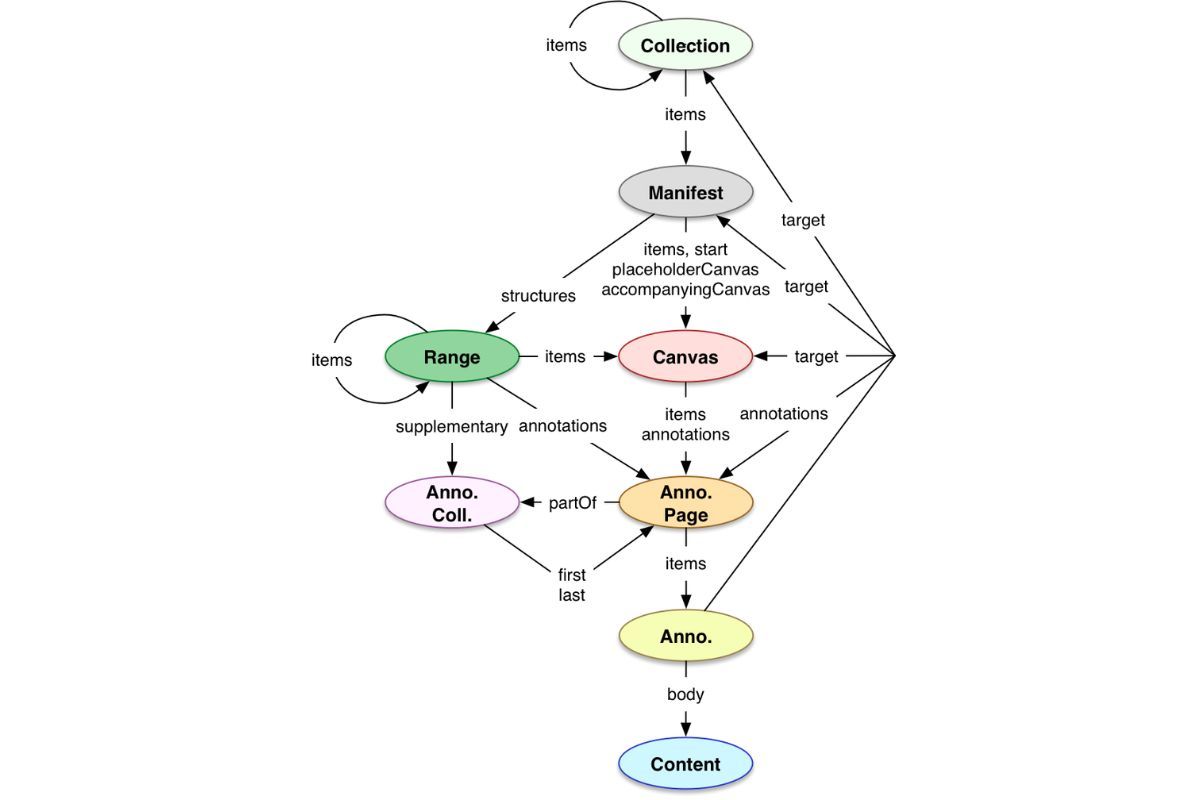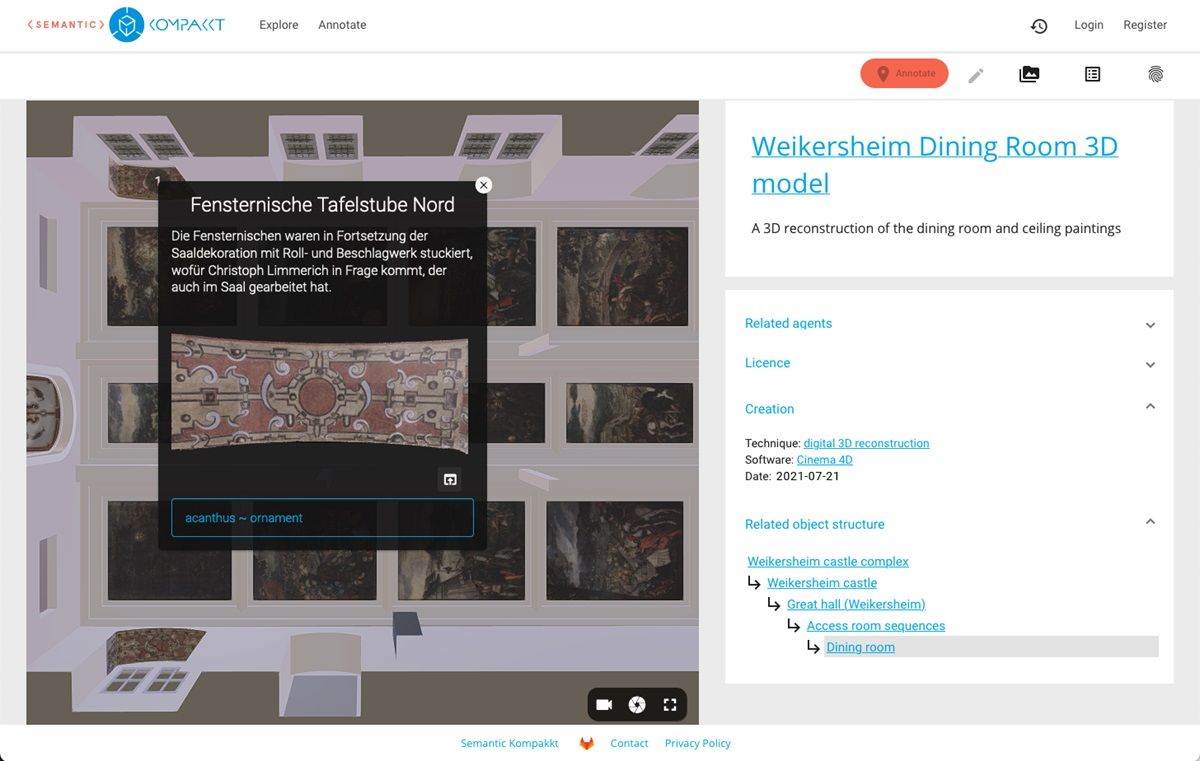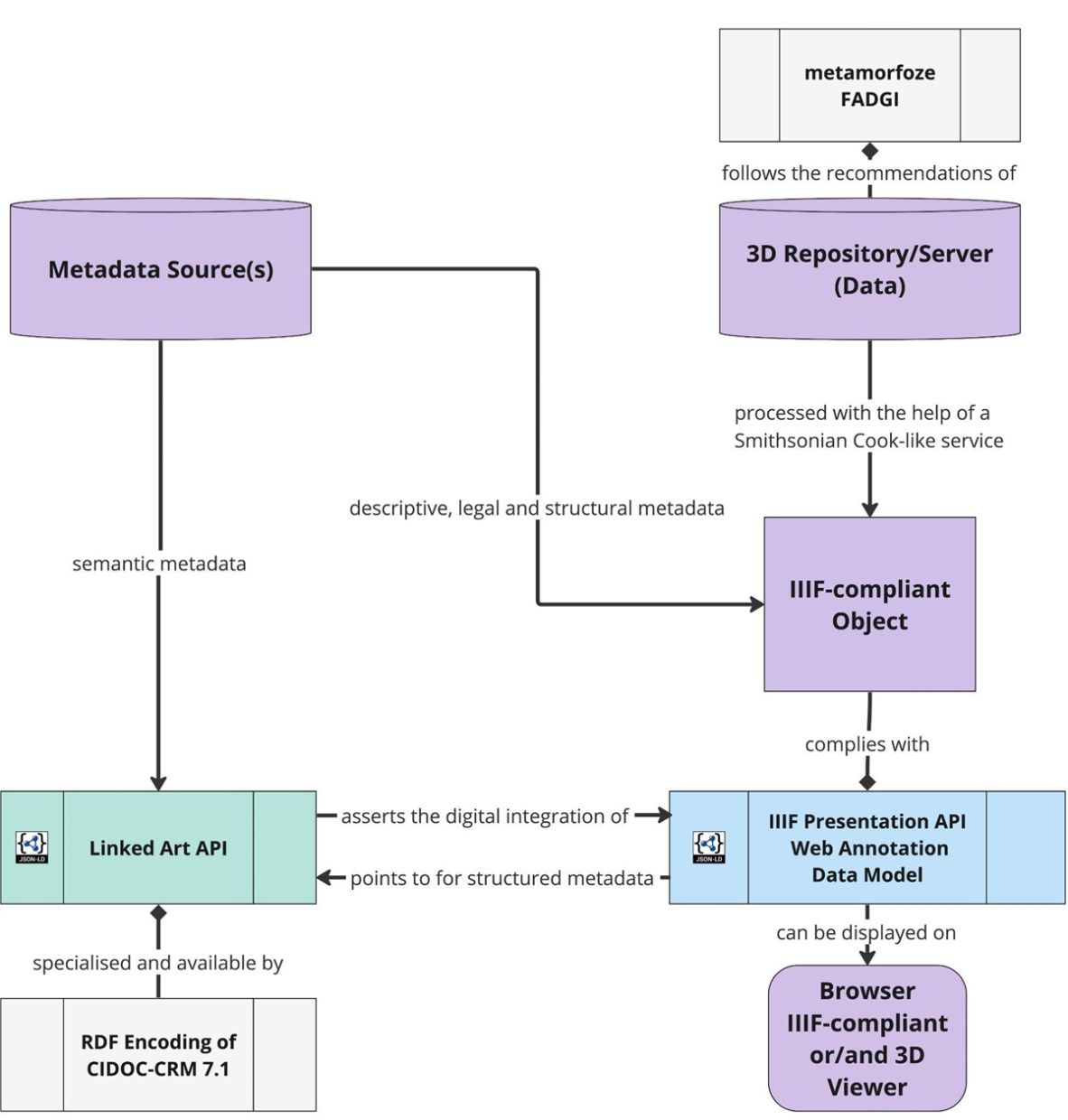Tool pipelines for optimising the processing of large 3D media included open source tools, such as MeshLab, Gimp and Blender, with potential for future automation via Python scripts. The Smithsonian Cook was cited as a successful example of an automated data pre-processing pipeline.
Institutional experience from a 3D digitisation project was also shared by the ETH Library and their Collection of Scientific Instruments and Teaching Aids. The project has so far made more use of commercial tools in their workflow, including publishing the collection on Sketchfab. Sketchfab was selected because it reaches a wide public audience, with tracked visitor numbers and downloads showing impact, and it offers direct integration with Europeana.eu. A further step towards interoperability would be to re-publish their collection objects on open viewers such as MorphoSource and Semantic Kompakkt – a prospect discussed during the Q&A.
Outlook
Tools like Sketchfab and open source alternatives like MorphoSource and Kompakkt make it possible to upload and view single 3D models on the web with different options for collaboration and annotation. More complex environments like Mozilla Hubs offer the potential of positioning multiple objects in a 3D scene in relation to each other. Staying true to the IIIF Design Principles (to make simple things easy and complex things possible), the 3D specification would need to ensure that viewers can both implement a ‘minimum viable product’ for user interaction and remain interoperable, as well as include more complex interactions and still specify those in a standards-compliant way.
Get involved
Are you interested in 3D interoperability? Here’s how to get involved:
Join the IIIF community to learn more and consult with other community members if you need help with your digitisation workflow.
Join technical group meetings and test implementations.
Report issues or use case feedback related to IIIF on Github.
Publish your data on one or more online tools and repositories, and consider what reasons you might have to go with a commercial or open source environment.
To discuss IIIF and other topics related to research and development in the cultural heritage sector, you can also join the EuropeanaTech community.
Help shape the next phase of sharing multi-dimensional cultural heritage on the web!




